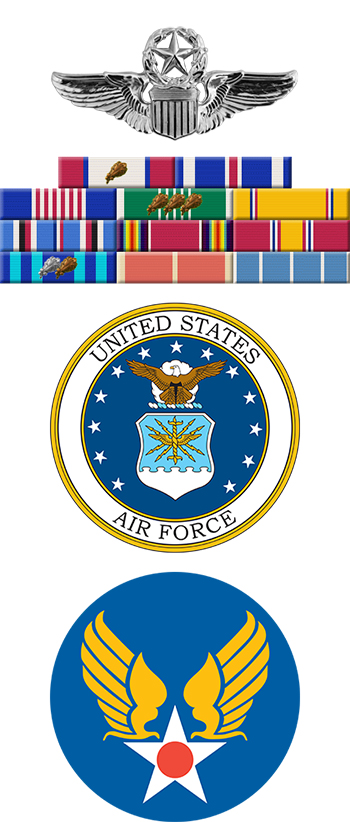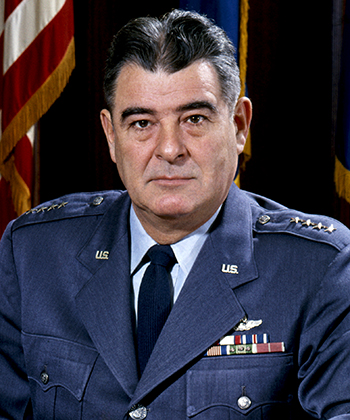
|
Edwin W. "Ed" Rawlings |
 |
|||
| Rank, Service | ||||
General O-10, U.S. Air Force |
||||
| Veteran of: | ||||
|
||||
| Tribute: | ||||
Ed Rawlings was born on September 11, 1904, in Milroy, Minnesota. He graduated with a Bachelor's Degree in Economics from Hamline University in St. Paul, Minnesota, in 1927, and enlisted in the U.S. Army Air Corps Reserve on February 29, 1928. Rawlings went on active duty in the Aviation Cadet Program of the U.S. Army Air Corps on February 19, 1929, at March Field, California, and was commissioned a 2d Lt and awarded his pilot wings at Kelly Field, Texas, on February 17, 1930. His first assignment was as a pilot with the 4th Observation Squadron of the 18th Composite Group at Luke Field, Hawaii, from March 1930 to March 1932, followed by service as a pilot with the 12th Observation Squadron of the 12th Observation Group at Brooks Field, Texas, from May 1932 to September 1935. During this time he was also put in charge of the Post Exchange (PX) at Brooks Field, and was promoted to Captain in April 1935. Capt Rawlings served as Assistant Chief of the Administration Branch in the Field Service Section, Material Division, at Wright Field, Ohio, from September 1935 to September 1937. He then received an assignment to complete his Master's Degree in Industrial Management at Harvard University, where he graduated in June 1939. Capt Rawlings then returned to Wright Field, where he served in the Administrative Divison from June 1939 to June 1940, and then as Assistant Budget Officer in the Statistical Branch, Air Corps Material Divison from July 1940 to September 1942, having been promoted to Major in March 1941, to Lieutenant Colonel in January 1942, and to Colonel in March 1942. His next assignment was as Chief of the Production Resources Section, Production Division, U.S. Army Air Forces Material Center from September 1942 to May 1943, followed by service as Acting Chief of the Production Control Section, Production Division, from May to October 1943. Col Rawlings served as Administrator of the Aircraft Scheduling Unit Office of the Assistant Chief of Staff for Material, Maintenance and Distribution, Headquarters U.S. Army Air Forces from October 1943 to August 1945, and during this time he was promoted to Brigadier General in January 1945. While deploying to the Pacific for a new assignment, the war ended and Brig Gen Rawlings then served as Chief of the Procurement Division, Air Technical Service Command, from September 1945 to June 1946. His next assignment was in the Office of the Air Comptroller, Headquarters U.S. Army Air Forces at the Pentagon from July to November 1946, followed by service as Air Comptroller at Headquarters U.S. Army Air Forces from November 1946 to June 1949. Gen Rawlings served as Deputy Chief of Staff, Comptroller, with Headquarters U.S. Air Force at the Pentagon from July 1949 to July 1951, and then as Commanding General of Air Material Command at Wright-Patterson AFB, Ohio, from August 1951 until his retirement from the Air Force on March 1, 1959. During this time he was awarded the Soldiers Medal for rescuing his pilot after a crash in 1954. After his retirement, Ed joined General Mills in Minneapolis, Minnesota, as Financial Vice President in 1959, and became the company's President in 1961. He became Chairman of the Board of General Mills in 1967, and retired in 1969. Gen Rawlings was inducted into the Minnesota Aviation Hall of Fame in 1992. Ed Rawlings Flew West on December 8, 1997, and was buried at the U.S. Air Force Academy Cemetery in Colorado Springs, Colorado. His wife, Muriel "Pete" Rawlings (1900-1983) is buried beside him. |
||||
|
||||

